LEINSTER’S REVIEWS THIS week are unlikely to have been excessively positive.
While Leo Cullen’s side won against Cardiff Blues last Friday in the Guinness Pro14 and can take pride in the result, they didn’t hit many of the standards they have set out for themselves.
The first game of the new season is always going to involve a frustrating error count, but Leinster were unhappy with a number of areas in their performance, even after coming back from 29-14 down with half an hour left to win 33-32.
They were missing frontline players, but this Leinster squad does not accept a dip in standards even when Ireland internationals are absent.
The basic defensive errors that contributed to an exciting Blues team scoring four tries will have been focused on this week, and the breakdown – where the Welsh region caused Leinster serious problems – has certainly been addressed.
Leinster gave up five breakdown turnovers to the Cardiff Blues in an area where they were well warned of the threat.
The Blues averaged eight turnovers a game last season, the highest of any team in the Pro14.
It’s important to note that this figure doesn’t refer solely to breakdown turnovers, but the Blues are well-known for their excellence in jackaling over tackled players to earn possession.
The next highest average for turnovers in the Pro14?
Yes, it’s this weekend’s opponents, Wayne Pivac’s Scarlets, with an average of 7.3 turnovers a game. Scarlets have lost breakdown freak Tadhg Beirne, of course, but James Davies will lead an assault on Leinster’s possession at Parc y Scarlets.
At their best, Leinster are a slick machine when it comes to clearing out attacking rucks, but they stuttered last weekend.
The first Blues turnover came as early as the third minute, with the superb Ellis Jenkins pouncing.
Click here if you cannot view the clip above
After a couple carries from the forwards after a scrappy lineout, Leinster play off out-half Ross Byrne.
Rory O’Loughlin runs a direct line at Blues out-half Jarrod Evans to sit him down [red below], while Barry Daly [white] and Joe Tomane [yellow] bounce out behind him.
With O’Loughlin tying down Evans, the intent of this play is to make life difficult for Blues centre Willis Halaholo [12 above].
If Tomane’s run can lure Halaholo onto the Leinster inside centre, or even briefly distract him, that will naturally leave space for Daly to burst into.
But the ‘animation’ from Tomane is poor here – his hands are down by his side and he never looks like a realistic target.
Halaholo makes an excellent read of the situation and blitzes out of the defensive line, thundering into Daly ball-and-all…
… hammering his right shoulder into the Leinster wing and getting a firm wrap of his arms in behind Daly’s legs to immobilise him immediately.
The quality of the hit from Halaholo leaves Daly suddenly on the ground in a dangerous position, on his back and with the ball exposed – as we can see below.
It’s a prime poaching opportunity for a jackal as effective as Jenkins and we can see the accuracy of his work below.
Jenkins gets his hands directly onto the ball within a split second, whereas some jackals end up wrapping around the body of the tackled player.
Click here if you cannot view the clip above
We can see above that Daly makes an effort to roll his upper body away from Jenkins but he can’t prevent the Blues openside from getting his hands onto the ball.
“We work very hard on making sure that we’re not exposing the ball when we go to ground, so we’re working with our top shoulder to make sure it’s closed off,” said Leinster assistant coach John Fogarty of their breakdown work last weekend.
“We opened up our top shoulder and we were belly-up a number of times.”
Daly does look to close off the ball from Jenkins here by attempting to roll his left shoulder over the ball…
… but the speed of Jenkins, and his ability to get low to the ground with a wide base, allows him to take advantage of the excellence of Halaholo’s tackle.
Leinster are a little slow in their reaction to the tackle. Out-half Byrne ignores the breakdown and heads instead to the right-hand side to set up for the next phase.
O’Loughlin has to step slightly backwards in his attempt to deal with Jenkins and ends up grasping him around the neck, as we see below.
That illegal clearout from O’Loughlin does begin to shift Jenkins off to his right, but then we see some clever support play by Dmitri Arhip and Rory Thornton to aid their openside in completing the turnover.
As indicated below, Arhip and Thornton clamp onto Jenkins.
Just as Halaholo begins to stand up from his tackle, subtly delaying Tomane’s arrival to the ruck, Arhip and Thornton clamp onto Jenkins’ upper body, anchoring him in place and preventing him from falling to ground in O’Loughlin’s clearout.
Much of the hard work has already been done by Jenkins, but these supporting actions at the breakdown can sometimes be the difference.
Jenkins is able to win a clean turnover in this instance, allowing the Blues to burst away on the counter-attack, leading directly to a penalty and three points from the boot of Evans.
There is a touch of misfortune about the next turnover Leinster give up, but it’s excellent work from the Blues again.
Click here if you cannot view the clip above
Byrne carries the ball at the line after some superb offloading and a clever Scott Fardy sneak from a ruck have brought them flooding into the 22.
Dave Kearney is set to be the first arriving player to clearout for Leinster, but he trips over the body of tackler Arhip.
With Kearney off his feet, the Blues get another split-second window and loosehead Bradley Thyer and number eight Nick Williams both pounce on the exposed ball.
Thyer and Williams lean in over the ball, risking falling forward off their feet, but cleverly understanding that the arriving Leinster rucking players will help to push them back upright and off the ground, painting a good picture for referee Nigel Owens.
On the ground, Byrne can’t buy time for his team.
He ends up on his side, pointing east-west, as we see below.
If we jump forward to another Blues turnover later in the game, below, we can see something similar from ball carrier Fergus McFadden.
Click here if you cannot view the clip above
This incident is very similar to the first, with Leinster running essentially the same move but off scrum-half Luke McGrath this time, before Halaholo makes an excellent tackle on his inside shoulder to allow Jenkins to jackal.
Just as Jenkins is about to pounce in the shot below, we can see that McFadden is on his side, with his upper body pointing west-east, similarly to Byrne in the second example we looked at.
Leinster identified this as an issue on the ground, highlighting their ability to ‘recoil’ – aggressively work their upper bodies back towards Leinster’s support in a bid to deny the jackals access to the ball.
“We’re working with our top shoulder to make sure it’s closed off, then we can recoil,” said Fogarty.
“I think our recoil was poor [against the Blues]. It was slow and our chest ended up being across the pitch, but we can get our chest downfield a bit better.”
The fight from Jenkins in this third instance is exceptional. He shows the referee a clear release before targeting the ball and ever-so-slightly leans his knees onto ball carrier McFadden, providing him with more stability.
Leinster are slow to react to the danger, with scrum-half McGrath having to enter the contest and attempt to shift Jenkins.
He resorts to the ‘tin opener’ or ‘croc roll,’ looking to roll Jenkins off to left, while Byrne joins from the right-hand side and hooker James Tracy also enters the contest.
But even with three Leinster players looking to shift him, Jenkins shows his physical strength to stay on the ball, with Josh Turnbull clamping onto him just as Owens awards the penalty.
Leinster had more trouble on the ground for another Jenkins turnover in the 59th minute.
Click here if you cannot view the clip above
Rhys Ruddock is tackled by the Blues’ Olly Robinson and, again, we can see that the ball is exposed.
Blues hooker Kristian Dacey is hovering over the ball but he doesn’t actually get directly onto it.
Dacey’s role is instrumental in the turnover, however, as he provides Jenkins with the split second he needs to get on the ball.
As highlighted below in white, Dacey creates a barrier between Leinster’s first arriving rucking player, Caelan Doris, and Jenkins.
By the time Bryan Byrne gets a ruck hit onto Jenkins, he has once again got his hands wrapped cleanly onto the ball.
Jenkins is able to rip it free of Ruddock as Byrne drives into him and Doris croc rolls Dacey away on the other side – another clean turnover for the Blues.
The Welsh side’s final three points of the game also came from a turnover, as Robinson earned them a penalty.
Click here if you cannot view the clip above
Byrne is on the ball again in this instance, with opposite number Evans chopping him to ground rapidly.
The Leinster out-half begins to look for an offload from the ground…
… before realising it’s not on and attempting to get that top shoulder down and protect the ball.
Robinson has reacted quickest, however, and we see great ball focus from him as he wins the race to the tackle [white below], beating Andrew Porter [red] and winning the ‘shoulder battle’ by getting in underneath the Leinster prop as he jackals.
The reaction from Robinson, and his agility into the breakdown, is crucial and it’s another area where Leinster felt they let themselves down in Cardiff.
“When we make a decision, our reaction to it needs to be that bit better,” said Fogarty. “There were times where maybe we needed to kick ourselves out of trouble, but when we make that decision to run we need to make sure we’re reacting accordingly.
“Our reaction was a little bit slow into the breakdown at times when people made decisions that were away from what they would normally do.”
With the Scarlets sure to be hovering over the tackle again on Saturday at Parc y Scarlets, Leinster will need to be far more alert, accurate and aggressive with their breakdown work.
The42 is on Instagram! Tap the button below on your phone to follow us!






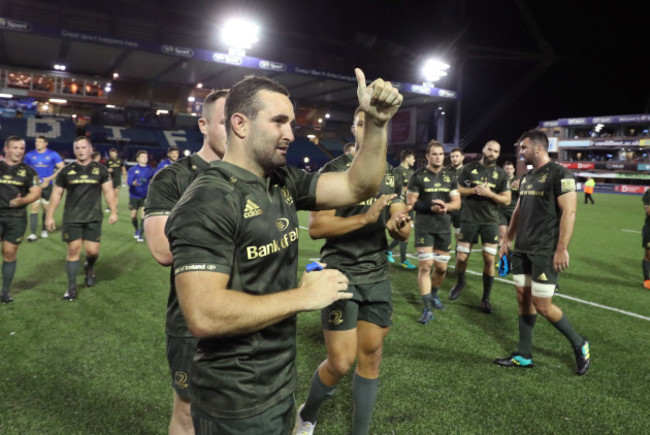
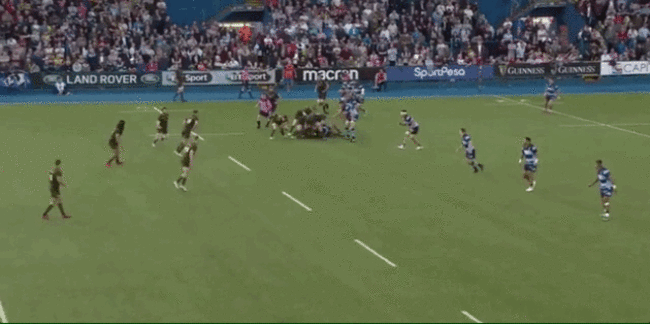

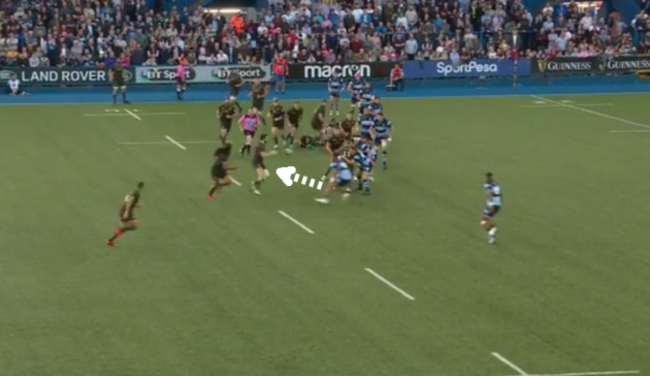
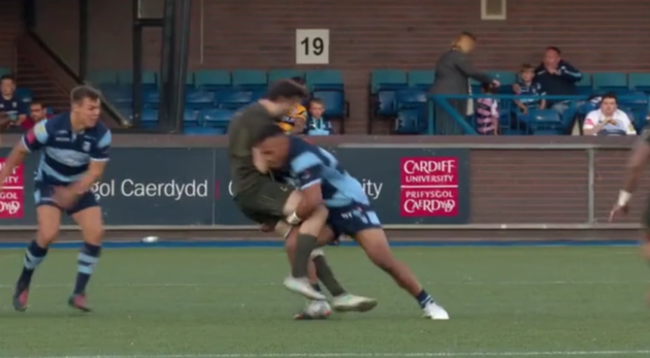
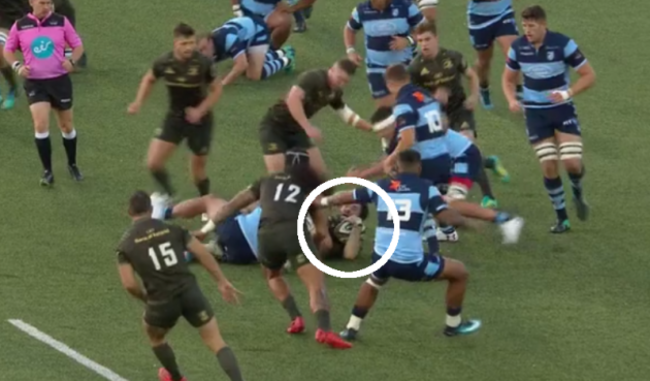
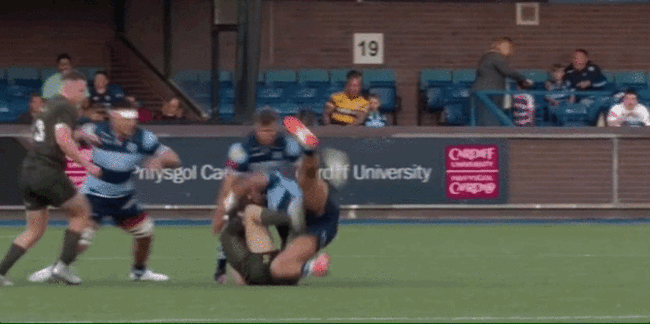
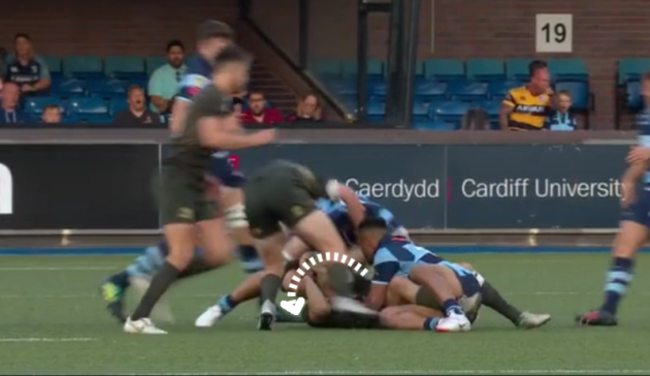
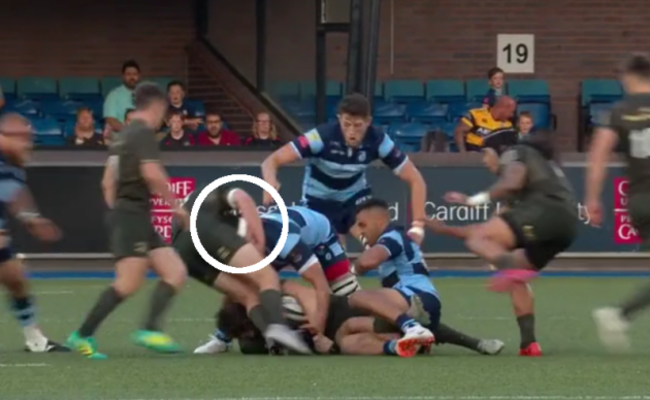
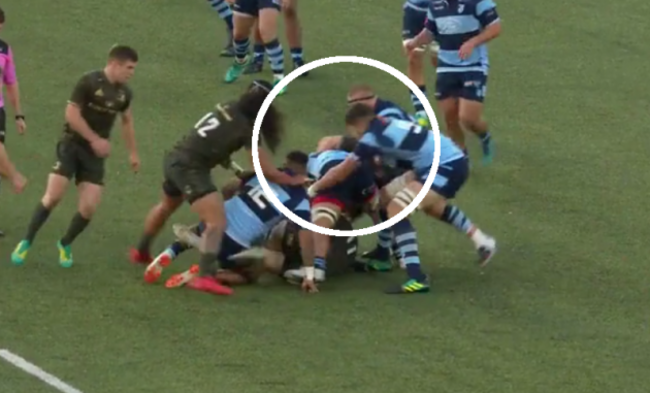
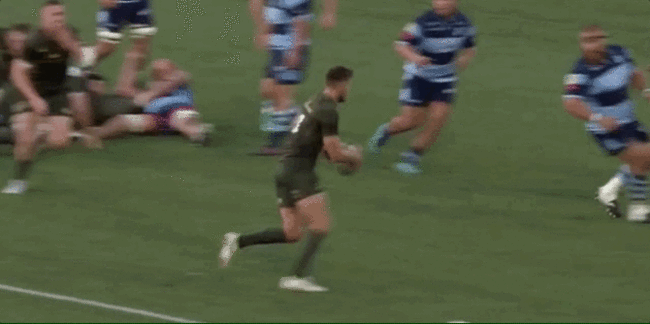
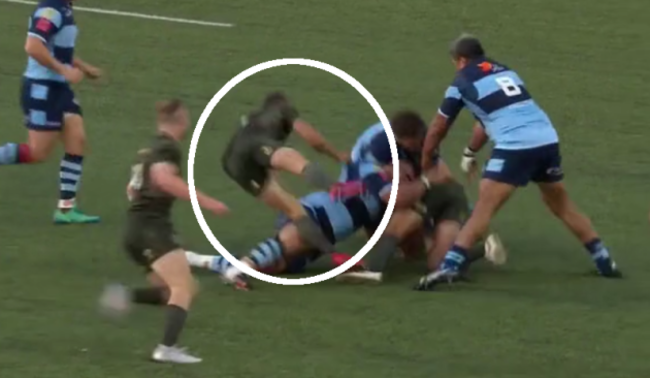

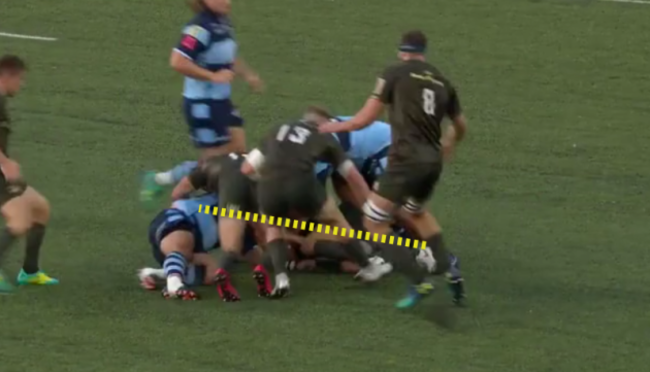
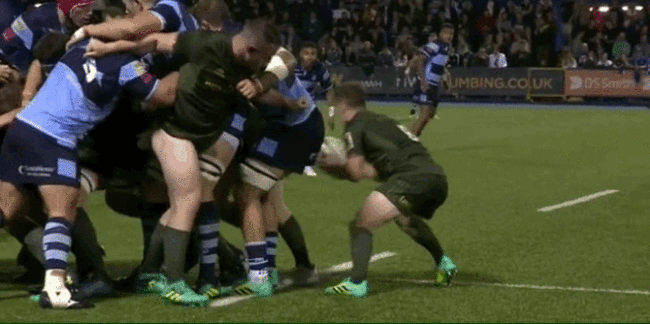
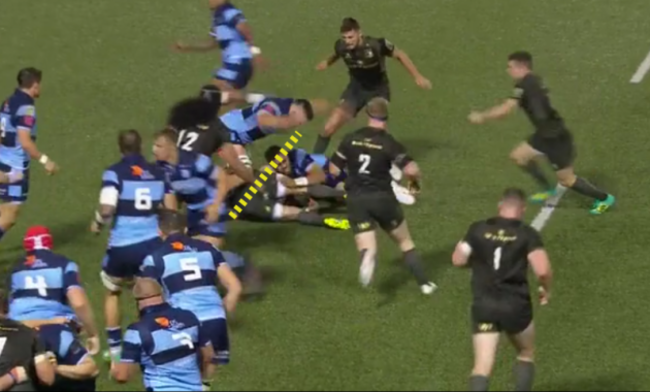
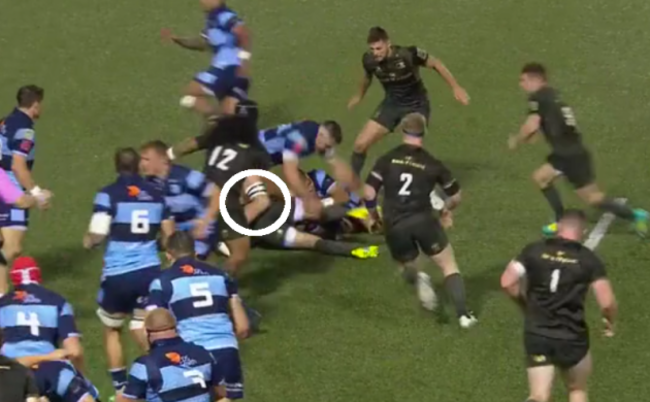
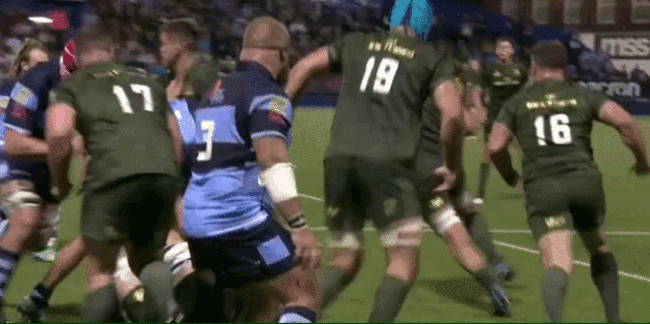
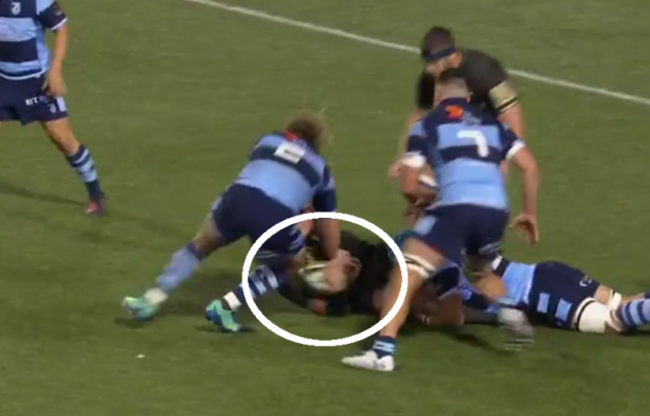
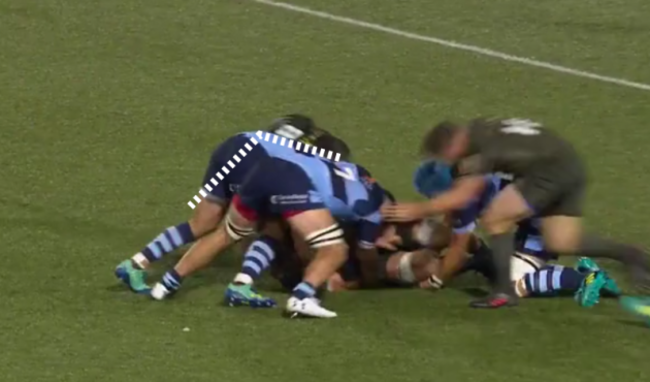
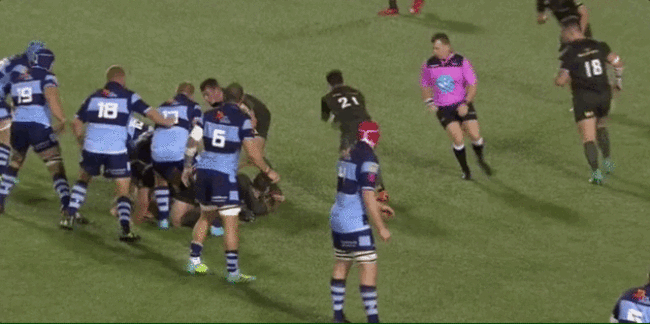
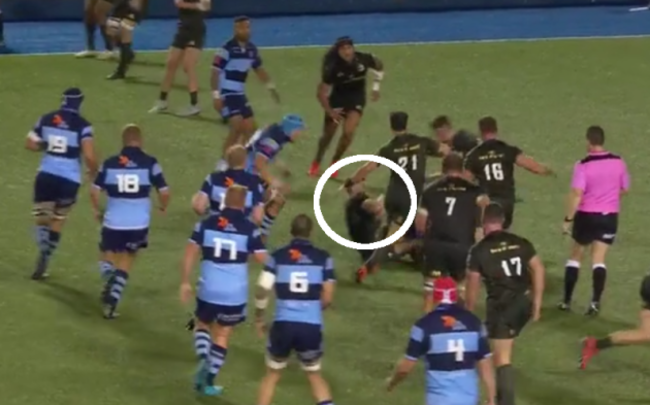
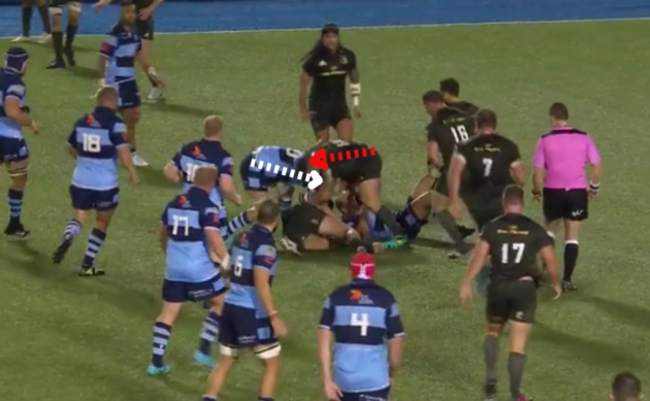




He’s not as disappointed as some on relation to how far off they are? They are miles off. No offence to Munster but they are an average,though very gutsy and committed side,and they have hammers Leinster twice in a row now. I do agree that they haven’t had any continuity with combinations,especially from 9-13,and hopefully when the likes of OBrien, Healy, Moore, Teo, McFadden etc come back then there will be a big improvement.
I must take the opportunity to praise Matt O’Connor for the huge improvement in Guinness Pro12 teams. Ever since he arrived at Leinster, every other team has greatly improved. Teams, that two years ago were almost brushed aside by Leinster, have now reached the heights that Leinster once inhabited alone.
Treviso have improved, Munster have improved, Edinburgh have improved, Scarlets have improved, Dragons have improved, Zebra have improved, Connacht (brilliant tonight, by the way) have improved..
In fact, they have all improved so much that Leinster has great difficulty taking on any of them.
By extension, Wasps and Harlequins have shown just how brilliant they are too due to you Matt.
I can hardly wait to see how much Castres get better when they arrive at the RDS soon. They will build statues in your image all over the town.
Matt, you have done European rugby a great service. They have all reached and surpassed Leinster this season thanks to your input at Leinster and everywhere else.
Thank you Matt and Happy New year!.
(and also to Mr Caputo, the news paper seller. Your influence on all other teams has been exceptional)